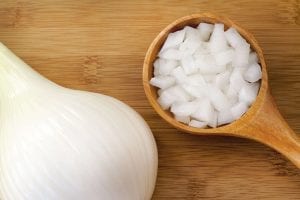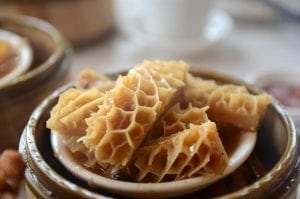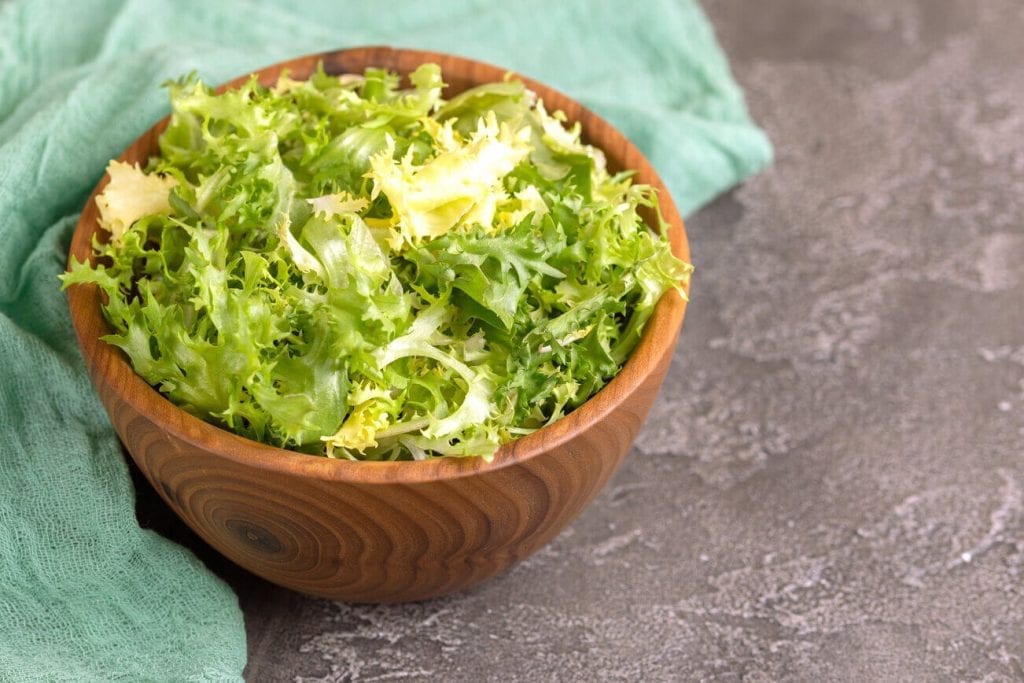
Frisée is not your average lettuce. In terms of appearance, lettuce generally has broad, wide leaves. Frisee, on the other hand, has narrow and frizzy leaves.
Aside from appearance, it also contrasts with most lettuce in terms of taste. Butter lettuce, one of the most popular types, has a slightly sweet flavor. Frisee, on the other hand, is notable for its mildly bitter and peppery flavors.
But looks and tastes are not the only things different about this green, leafy vegetable. So, stick around to know more about it!
What Is Frisee?
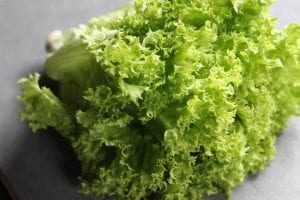
Despite its “lettuce” label, frisée (pronounced “free-ZAY”) is actually not a member of the lettuce family, but rather the chicory plant family. Some of its distant relatives include the Belgian endive, green endive, radicchio, escarole, and treviso. But the confusion is warranted since some chicory plants such as frisee and escarole do look a lot like lettuce.
Occasionally, people also call it “curly endive” or “chicory”, especially in the UK. However, this green veggie is a bit different despite the similarity in names. Other endives tend to have broad, circular leaves. Frisee, on the other hand, has short and bushy leaves.
In terms of appearance, frisee has frizzy and narrow leaves, almost like a shredded lettuce leaf. Its green leaves have a pale yellow-green hue nearer to its core. But despite looking like a torn lettuce, it has its own unique flavor.
Even if it’s not everyone’s pick when making salads or dishes with vegetables, it’s still edible. As mentioned, it has a slightly bitter and peppery taste. While most of its parts can be eaten, people tend to avoid its pale, yellow heart due to its extremely bitter taste.
This green veggie is best enjoyed with other ingredients or dishes that are full of flavor. Serving frisee as a side for juicy cajun roast chicken, for example, will surely amplify the quality of your meal.
Now that you know more about this frizzy plant, you’ll want to know how to prepare and serve it.
How to Prepare Frisee
Depending on what you’re making, there are two ways you can go about preparing this vegetable.
If you’re making a frisee salad, all you have to do is to use your hands to tear its stalk into smaller portions. Make sure that the branching leaves are torn to bite-sized pieces. If not, it can be difficult to eat them with a fork.
To prepare this vegetable for cooking, cut off the green leaves using a knife in a full slicing movement. Once the green leaves have been removed, slice the remaining leaves near the core in a paring motion.
Now that the frizzy veggie is chopped and cleaned, you’ll want to try it on some delicious recipes.
Different Ways to Serve Frisee

Despite its unconventional taste, this green veggie is still enjoyable when paired with the right meals. You can use its natural bitterness by dressing or pairing it with food that have strong flavors. It goes well with cheese and fruits. You may also use pecans or walnuts too.
Additionally, the yellow leaves can be served as a salad or as a side for any meat dishes. You may also dress the leaves with any sweet or sour dressings such as maple syrup or vinegar. Its natural taste goes well with dresses such as these, so expect an exquisite combination of flavors. Just make sure not to add too much dressing so it won’t wilt.
And as examples, here are some frisee recipes for you to choose from.
Salad Lyonnaise – This classic French frisee salad recipe features the frizzy veggie along with the combined flavors of pancetta and poached eggs. Dress it with dijon vinaigrette then serve as a savory appetizer or side dish.
Salad With Honey Mustard, Eggs, and Toast – Pair the frizzy veggie with other leafy salad greens such as romaine, arugula, and baby kale. Add in some radicchio and eggs then dress it in honey mustard for an exquisite salad meal.
Tuna With Pasta and Frisée – Use frisee along with pasta and chestnuts to highlight the flavors of tuna. Toss in some fresh lemon juice to the combination, and you’ll serve a five-star dish to friends and family.
Squash and Potato Pizzas – Just like any other veggies, you can also use frisee as a pizza topping. Serve this frizzy plant with some potatoes, Manchego cheese, and golden squash to create a healthy pizza dish.
Pizza Bianca with Truffle Oil – And if you’re craving a heavenly pizza with frisee for your weekend cheat meal, then you’ll want to consider this recipe. Pair it with white pepper, ricotta, and taleggio cheese for a creamy and cheesy meal.
Where to Buy Frisee
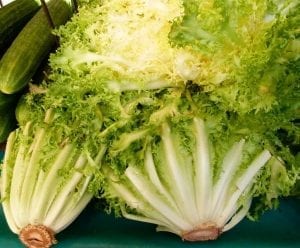
Wikimedia Commons | Dinkum
You can buy it all year round in your grocery or your favorite farmers’ market. How can you tell if it is fresh? Fresh frisee will have vibrant bouncy leaves with a pale yellow center. Also, make sure that the leaves don’t have any brown spots or other discolorations.
How to Store Frisee
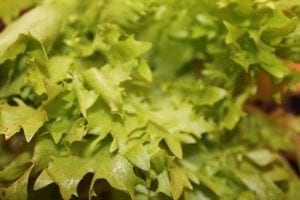
In order to keep its freshness, don’t rinse the frisee if you’re not going to use it immediately. Instead, keep it in a dry, sealed plastic bag in the crisper drawer of the refrigerator.
Only wash the frisee when you’re going to use it since it holds a lot of water. If it shows early signs of wilting, you can actually save it by soaking it in water for around 15 minutes. Just remember to use a salad spinner to ensure that the frisee dries properly.
Additionally, frisee only has a shelf life of three to five days. While you can freeze green veggies like celery, freezing frisée to preserve it is not advised. This may ruin its quality, so make sure to buy only the amount that you need.
Frisée Is a Chicory That You Can Serve in Many Ways
Although it’s not lettuce, it is still a leafy green that you can enjoy. Despite its bitterness, frisee’s natural peppery flavors can still offer a different experience in cuisine. If you pair it with other flavorful ingredients or dishes, then you will surely enjoy this frizzy veggie. So if you want to try enjoying frisee as a wonderful meal, don’t forget the tips and recipes we mentioned!
Was this page helpful?
Read Next: Celery Seed: What Is It And Best Substitutes



